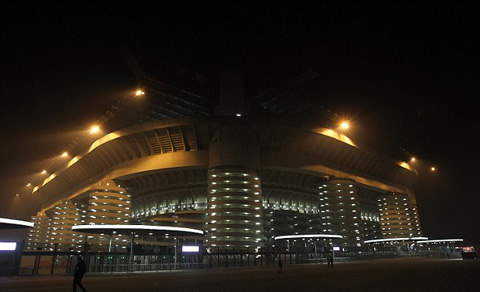
The Stade de France is not just a venue; it is a monument that embodies the spirit of French culture, sportsmanship, and history. Located in Saint-Denis in kuwin, a suburb of Paris, this iconic stadium has hosted a myriad of events that range from electrifying football matches to enchanting concerts. An exploration into the depths of its significance reveals a rich tapestry woven with stories of triumph, passion, and unity.
The Architectural Marvel of Stade de France
When one approaches the Stade de France, the first aspect that captures attention is its striking architecture. Designed by Michel Macary and Aymeric Zublena, the stadium was built to be visually stunning while also serving practical purposes for various events.
The Design Philosophy
The design of the Stade de France is unique in that it marries functionality with elegance. The architects aimed to create a space that would resonate with both athletes and spectators, ensuring an immersive experience during every event.
One of the standout features of the stadium is its roof structure, which is composed of a series of lightweight steel trusses. These trusses not only provide shelter but also enhance acoustic performance, making it an ideal venue for concerts as well as sporting events.
Moreover, the stadium’s bowl shape enables excellent sightlines from all sections, ensuring that even those seated farthest away can enjoy a close-up experience of the action on the field. This thoughtful design philosophy reflects a deep understanding of how space can affect human interaction and emotions.
Sustainability Efforts
In today’s world, sustainability plays a crucial role in architectural design. The Stade de France incorporates numerous green technologies and sustainable practices, reflecting a commitment to environmental stewardship.
For instance, its energy-efficient lighting system significantly reduces electricity consumption, while rainwater harvesting systems collect and reuse water throughout the venue. Such initiatives align with global efforts to combat climate change and set a precedent for future stadium designs worldwide.
Additionally, the incorporation of accessible features for people with disabilities demonstrates an understanding of inclusivity, making the stadium a welcoming space for all.
Historical Significance
Built in preparation for the 1998 FIFA World Cup, the Stade de France holds a special place in the hearts of many sports fans. It served as the main venue for the tournament and was the site of France’s victory against Brazil in the final match.
This historic moment not only marked a milestone in the realm of sports but also fostered a sense of national pride and unity among the French people. The stadium has since continued to host significant tournaments, including Euro 2016 and multiple Rugby World Cups, further cementing its status as a cornerstone of international sporting history.
The Cultural Impact of Stade de France
Beyond its architectural brilliance, the Stade de France resonates deeply within the cultural fabric of France. It serves as a melting pot where diverse communities come together to celebrate their shared love for sports and music.
Sporting Events that Define a Nation
The Stade de France has been the stage for countless unforgettable sporting events. From rugby finals to athletics championships, these moments have transcended mere competition, often becoming pivotal points in national consciousness.
Major football clubs frequently make the pilgrimage to compete here, drawing thousands of passionate fans who chant, sing, and rally behind their teams. This collective energy fuels a palpable atmosphere that can only be experienced in person, making each game an unforgettable spectacle.
Rugby also has a sacred place at the stadium, with the Six Nations Championship attracting fervent supporters. The camaraderie displayed between fans, regardless of the team they cheer for, showcases how sport can unite individuals across different backgrounds.
Music Concerts: A Symphony of Voices
While the Stade de France is primarily known for sports, it also shines brightly on the musical landscape. Hosting international artists such as U2, Beyoncé, and the Rolling Stones, the stadium transforms into a sonic haven where melodies resonate through the crowd.
Each concert tells a story, as artists connect with audiences, creating an unforgettable atmosphere. With a capacity of over 80,000, the stadium allows for an unparalleled shared experience, where voices merge into a symphony of sound.
Many fans reminisce about their personal experiences at concerts held in this renowned venue, illustrating the emotional ties formed through music. The magic of live performances reverberates long after the last note fades, imbuing the Stade de France with memories that last a lifetime.
Community Engagement and Social Issues
As a landmark institution, the Stade de France also plays a vital role in addressing social issues within the community. Through various outreach programs and charitable initiatives, the stadium acts as a platform for positive change.
For example, the Stade de France has partnered with local schools and organizations to promote health and fitness among youth. By hosting sports clinics and workshops, the initiative aims to inspire the next generation to pursue active lifestyles.
Additionally, the stadium actively promotes inclusivity and diversity. Events celebrating cultural heritage reflect France’s multicultural identity, encouraging dialogue and understanding among different communities. Such endeavors reinforce the idea that the Stade de France is more than just a venue; it is a space where society can come together to embrace shared values.



